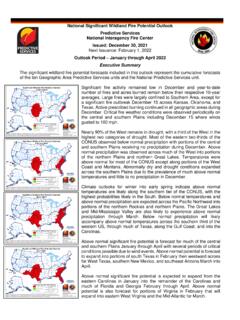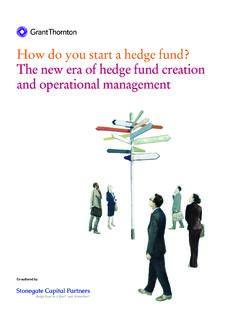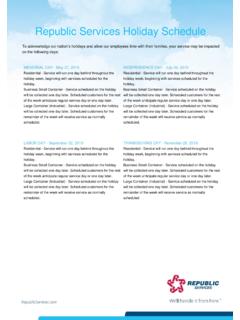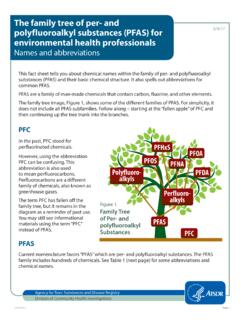Transcription of Entrepreneurship: Starting a Business - Virginia Tech
1 Fundamentals of Business Chapter 6: Entrepreneurship: Starting a Business Content for this chapter was adapted from the Saylor Foundation s by Virginia Tech under a Creative Commons Attribution-NonCommercial-ShareAlike License. The Saylor Foundation previously adapted this work under a Creative Commons Attribution-NonCommercial-ShareAlike License without attribution as requested by the work s original creator or licensee. If you redistribute any part of this work, you must retain on every digital or print page view the following attribution: Download this book for free at: Lead Author: Stephen J. Skripak Contributors: Anastasia Cortes, Anita Walz Layout: Anastasia Cortes Selected graphics: Brian Craig Cover design: Trevor Finney Student Reviewers: Jonathan De Pena, Nina Lindsay, Sachi Soni Project Manager: Anita Walz This chapter is licensed with a Creative Commons Attribution-Noncommercial-Sharealike License.
2 Download this book for free at: Pamplin College of Business and Virginia Tech Libraries July 2016 132 Download this book for free at: Chapter 6 Chapter 6 Entrepreneurship: Starting a Business Learning Objectives 1) Define entrepreneur and describe the three characteristics of entrepreneurial activity. 2) Identify five potential advantages to Starting your own Business 3) Define a small Business and explain the importance of small businesses to the economy. 4) Explain why small businesses tend to foster innovation more effectively than large ones. 5) Describe the goods-producing and service-producing sectors of an economy. 6) Explain what it takes to start a Business and evaluate the advantages and disadvantages Starting a Business from scratch, buying an existing Business , or obtaining a franchise. 7) Explain why some businesses fail.
3 8) Identify sources of small Business assistance from the Small Business Administration. Chapter 6 Download this book for free at: 133 Cover Story: Build a Better Baby and They Will Come One balmy San Diego evening in 1993, Mary and Rick Jurmain were watching a TV program about teenage To simulate the challenge of caring for an infant, teens on the program were assigned to tend baby-size sacks of flour. Rick, a father of two young children, remarked that trundling around a sack of flour wasn t exactly a true- to-life experience. In particular, he argued, sacks of flour simulated only abnormally happy babies babies who didn t cry, especially in the middle of the night. Half-seriously, Mary suggested that her husband a between-jobs aerospace engineer build a better baby, and within a couple of weeks, a prototype was born.
4 Rick s brainchild was a bouncing bundle of vinyl-covered joy with an internal computer to simulate infant crying at realistic, random intervals. He also designed a drug-affected model to simulate tremors from withdrawal, and each model monitored itself for neglect or ill treatment. The Jurmains patented Baby Think It Over and started production in 1994 as Baby Think It Over Inc. Their first factory was their garage, and the office was the kitchen table a little Business in a house, as Mary put it. With a boost from articles in USA Today, Newsweek, Forbes, and People plus a Product of the Year nod from Fortune news of the Jurmains infant simulator eventually spread to the new company s targeted education market, and by 1998, some forty thousand simulators had been babysat by more than a million teenagers in nine countries.
5 By that time, the company had moved to Wisconsin, where it had been rechristened BTIO Educational Products Inc. to reflect an expanded product line that now includes not only dolls and equipment, like the Shaken Baby Syndrome Simulator, but also simulator-based programs like START Addiction Education and Realityworks Pregnancy Profile. BTIO was retired and replaced by the new and improved RealCare Baby and, ultimately, by RealCare Baby II Plus, which requires the participant to determine what the baby needs when it cries and downloads data to record misconduct. In 2003, the name of the Jurmains company was changed once again, this time to Realityworks Inc. 134 Download this book for free at: Chapter 6 In developing BTIO and Realityworks Inc., the Jurmains were doing what entrepreneurs do (and doing it very well).
6 In fact, Mary was nominated three times for the Ernst & Young Entrepreneur of the Year Award and named 2001 Wisconsin Entrepreneurial Woman of the Year by the National Association of Women Business Owners. So what, exactly, is an entrepreneur and what does one do? According to one definition, an entrepreneur is an individual who starts a new Business - and that s true. Another definition identifies an entrepreneur as someone who uses resources to implement innovative ideas for new, thoughtfully planned ventures. 2 But an important component of a satisfactory definition is still missing. To appreciate fully what it is, let s go back to the story of the Jurmains. In 1993, the Jurmains were both unemployed Rick had been laid off by General Dynamics Corp., and Mary by the San Diego Gas and Electric Company. While they were watching the show about teenagers and flour sacks, they were living off a loan from her father and the returns from a timely investment in coffee futures.
7 Rick recalls that the idea for a method of creating BTIO came to him while I was awake in bed, worrying about being unemployed. He was struggling to find a way to feed his family. He had to make the first forty simulators himself, and at the end of the first summer, BTIO had received about four hundred orders a promising start, perhaps, but, at $250 per baby (less expenses), not exactly a windfall. We were always about one month away from bankruptcy, recalls Mary. At the same time, it s not as if the Jurmains started up BTIO simply because they had no conventional options for improving their financial prospects. Rick, as we ve seen, was an aerospace engineer, and his r sum includes work on space-shuttle missions at NASA. Mary, who has not only a head for Business but also a degree in industrial engineering, has worked at the Johnson Space Center.
8 Therefore, the idea of replacing a sack of flour with a computer-controlled simulator wasn t necessarily rocket science for the couple. But taking advantage of that idea choosing to start a new Business and to commit themselves to running it was a risk. Risk taking is the missing component that we re looking for in a definition of entrepreneurship, and so we ll define an entrepreneur as someone who identifies a Business opportunity and assumes the risk of creating and running a Business to take advantage of it. To be successful, entrepreneurs must be comfortable with risk, positive and confident, well organized, and very hard working people. Chapter 6 Download this book for free at: 135 The Nature of Entrepreneurship If we look a little more closely at the definition of entrepreneurship, we can identify three characteristics of entrepreneurial activity:3 1) Innovation.
9 Entrepreneurship generally means offering a new product, applying a new technique or technology, opening a new market, or developing a new form of organization for the purpose of producing or enhancing a product. 2) Running a Business . A Business , as we saw in Chapter 1 "The Foundations of Business ," combines resources to produce goods or services. Entrepreneurship means setting up a Business to make a profit. 3) Risk taking. The term risk means that the outcome of the entrepreneurial venture can t be known. Entrepreneurs, therefore, are always working under a certain degree of uncertainty, and they can t know the outcomes of many of the decisions that they have to make. Consequently, many of the steps they take are motivated mainly by their confidence in the innovation and in their understanding of the Business environment in which they re operating.
10 It is easy to recognize these characteristics in the entrepreneurial experience of the Jurmains. They certainly had an innovative idea. But was it a good Business idea? In a practical sense, a good Business idea has to become something more than just an idea. If, like the Jurmains, you re interested in generating income from your idea, you ll probably need to turn it into a product something that you can market because it satisfies a need. If you want to develop a product, you ll need some kind of organization to coordinate the resources necessary to make it a reality (in other words, a Business ). Risk enters the equation when you make the decision to start up a Business and when you commit yourself to managing it. A Few Things to Know about Going into Business for Yourself Mark Zuckerberg founded Facebook while a student at Harvard.
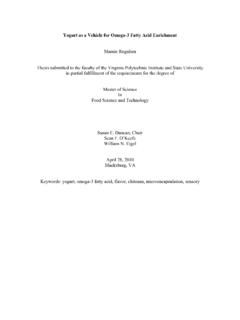
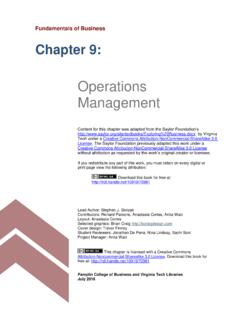

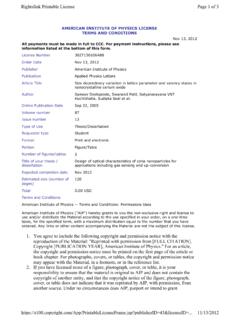
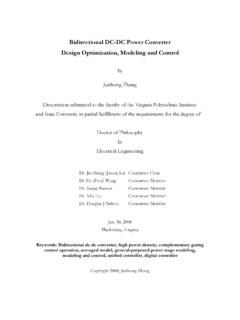
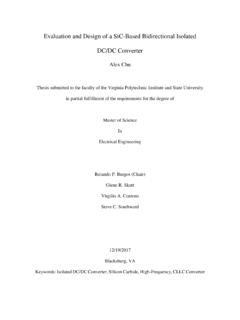
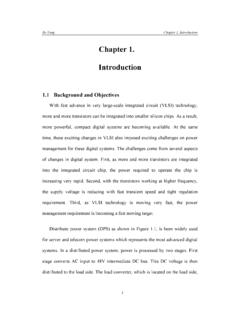
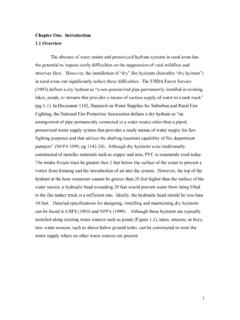
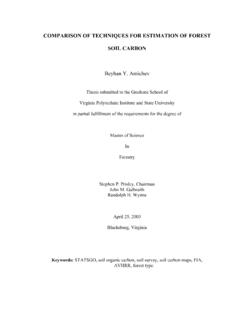
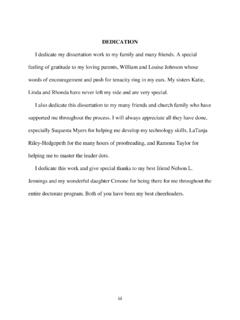
![ABSTRACT arXiv:1409.1556v6 [cs.CV] 10 Apr 2015](/cache/preview/4/e/0/e/4/4/2/c/thumb-4e0e442c20fc4f8e108fa20a1095af07.jpg)

